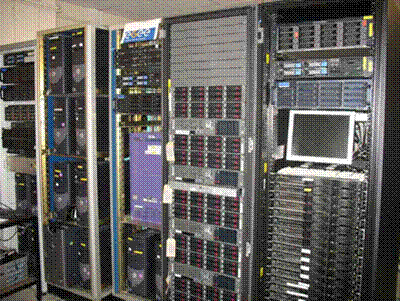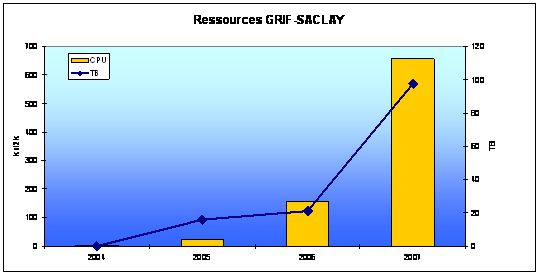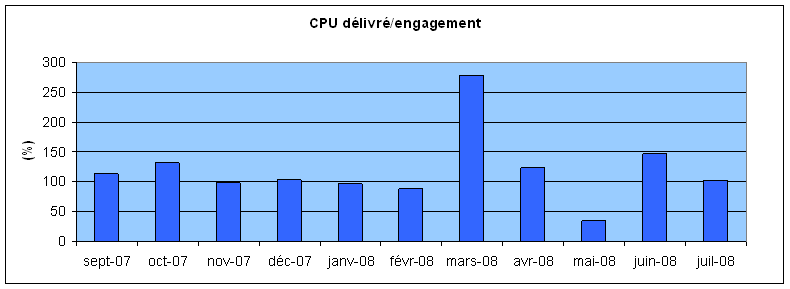Shortly after the LHC started up on the 10th September 2008 at 9:30 am, the detectors recorded the first events resulting from proton collisions in the beam detectors. The data processing scheme that had been planned for such a long time immediately came into action with the distribution of data to the Tier0 data centre, then the eleven Tier1 data centres, and finally the Tier2 data centres.
The first data arrived at the French Tier1 centre in Lyon at around 6:30 pm for processing and onward transmission to Tier2. GRIF received the first data to be analysed at around 4:30 am on the 11th September 2008.
The purpose of GRIF is to provide a computing grid linking all the major research centres in the Paris region with a common facility forming part of the European EGEE grid and the LCG world-wide grid. EGEE and LCG both see the site as a single entity, although it is actually composed of a number of physical nodes.
Construction of the prototype version of GRIF began in the Spring of 2005 on the initiative of three major high-energy physics laboratories in the region (CEA/DSM/IRFU in Saclay, IN2P3/LAL in Orsay, and IN2P3/LPNHE in Jussieu). Two further partners, IN2P3/IPN in Orsay and IN2P3/LLR in the École Polytechnique, joined the project in September 2005, bringing together all the laboratories in the Ile-de-France region involved with LHC experiments. In mid-2007, the APC Laboratory in Tolbiac became the sixth node in the project.
The Saclay node currently consists of 360 processor cores with a total computing power of 650 kSI2k corresponding to a processing speed of 3.2 Teraflops and a storage capacity of 97 Terabytes (97 000 GB). The computing resources available to GRIF will be more than doubled in November 2008 ready for the arrival of massive quantities of data.
The contribution of GRIF to the LHC computing grid is based on a commitment to provide computing resources to the experiments to a level specified in an annual declaration. In order to ensure that the promised resources are available, the collaborative LCG project monitors the availability of each site and keeps records of the computing hours supplied to the LHC experiments. The high level of availability of the GRIF resources derives from the joint commitment of the sites to the four LHC experiments. Each site accepts data from at least two LHC experiments. In this way the temporary loss of any one site will reduce the computing power available rather than shutting down the computing resource completely.
This sharing of resources has enabled GRIF to meet its commitments to the LGC despite the wide variations in the rates of data generation of the various LHC experiments.
Author
Jean-Pierre MEYER (IRFU/SPP)
Contact
Pierrick MICOUT (IRFU/SEDI/LIS)
• Innovation for detection systems Modelisation, calculation and data analysis
• The Electronics, Detectors and Computing Division • The Nuclear Physics Division • The Particle Physics Division








